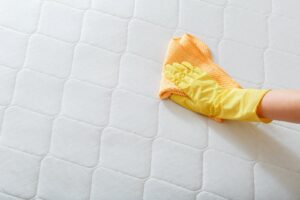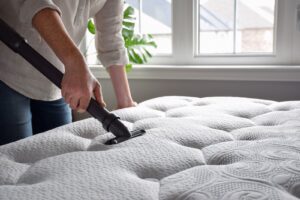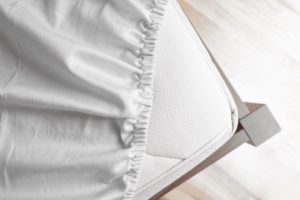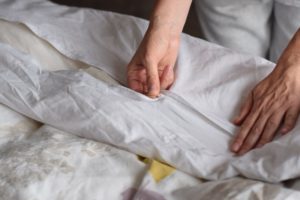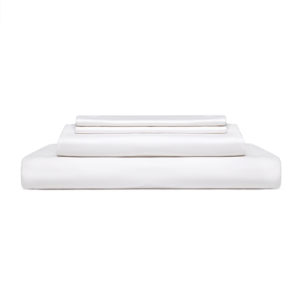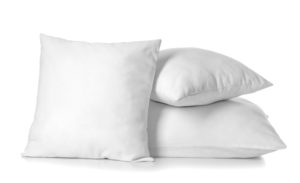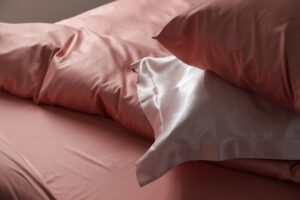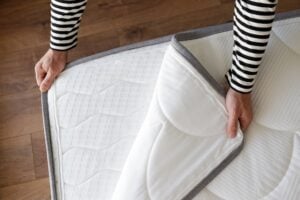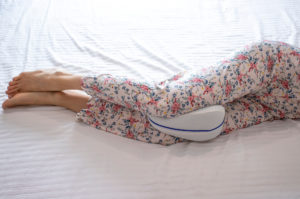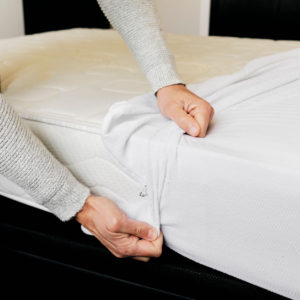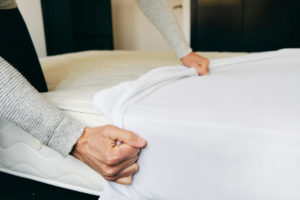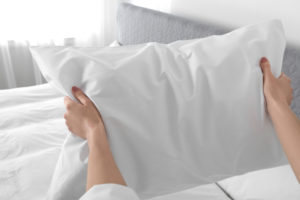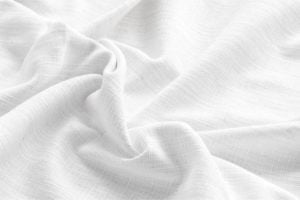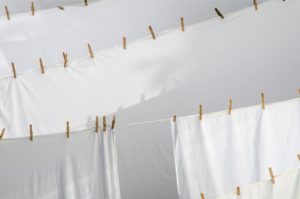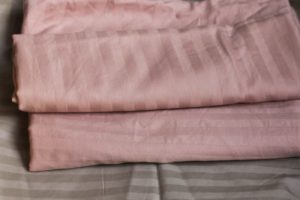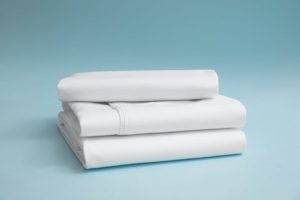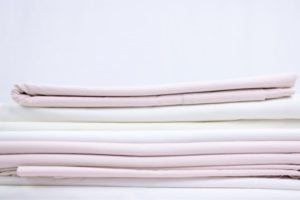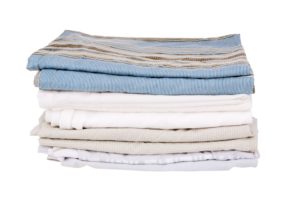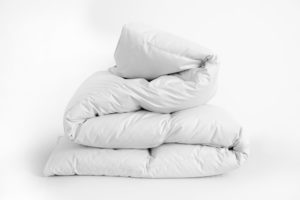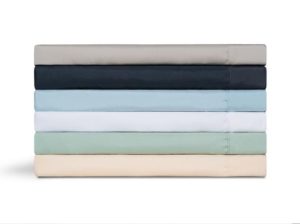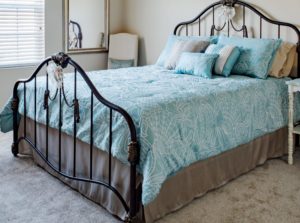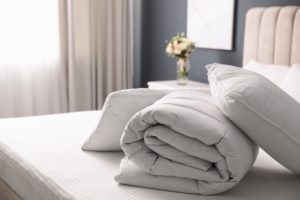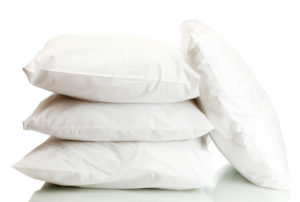What Is a Duvet Cover?
- A duvet is a plush, top-layer blanket traditionally filled with the soft layer of down found beneath the feathers of a goose or duck, but today’s variations can include down-alternative, wool, or polyester fills.
- A duvet cover is a fabric shell that protects the duvet, similar to a pillowcase, and is usually easier to clean. Duvet covers are made from various materials including cotton, flannel, and silk, each with its own benefits.
- A comforter is typically thinner, designed to be used as is, and is generally more budget-friendly, while duvets are fluffy and warmer, and usually used with a duvet cover for protection. These days, many comforters and duvets are designed to be used interchangeably with or without duvet covers.
While duvets and duvet covers originated in Europe, they are becoming increasingly popular in the United States as well. If you are considering a duvet for your bedroom, you may want to also consider a duvet cover to protect it.
Duvets come in varying sizes and are made with different materials. It can be difficult to decide what type of duvet to choose. We will take an in-depth look into duvets and duvet covers to help you make an informed decision. We will also go over some of the main differences between a duvet and a comforter.
What Is a Duvet?
A duvet is essentially a plush, top-layer blanket traditionally filled with the light, soft layer of down found beneath the feathers of a goose or duck. Given their history as down-filled blankets, duvets derive their name from the French word for down. However, variations today can be filled with other materials, such as down-alternative, wool, or polyester. What sets a duvet apart is its pillow-like structure which efficiently traps heat for warmth, without being heavy or restrictive. A duvet is often encased in a protective shell, known as a duvet cover, that is removable and interchangeable.
An all-season duvet should keep a sleeper warm in cool weather, but also cool in warm weather. The fill power of a down duvet can help you determine the feel you are looking for. A lightweight summer duvet typically has around 400 fill power. For colder temperatures, a fill power of around 600 or more may be best. A duvet with between 400 and 600 fill power is comfortable for most sleepers all year long.
The shell of a duvet is designed to keep the fill in place and to reduce bunching. The shell can be stitched with a variety of patterns to keep pockets of fill evenly distributed throughout the duvet. A duvet cover is used to protect the shell and fill of the duvet. A complete duvet set typically consists of a duvet insert, duvet cover, and pillow shams to match the duvet cover.
What Is a Duvet Cover?
A duvet cover encases your duvet for added protection. Similar to a pillowcase, a duvet cover has one side open to make it removable. The opening may be closable with buttons, snaps, ties, or a zipper to keep the duvet from slipping out.
One of the functions of a duvet cover is to keep the duvet insert cleaner for a longer period of time. Duvets need extra protection from body oils, sweat, and spills, as they are often used without a top sheet. Many duvets are difficult to clean or dry clean only, which can get expensive.
The duvet cover is typically much easier to wash than a full duvet or comforter. Duvet covers are lighter and thinner than the duvet and are usually machine-washable. It’s helpful to check the manufacturer’s cleaning instructions for the duvet and the cover to be sure they are properly maintained.
If you are interested in changing the look of your bedroom, a duvet cover can be an easy and relatively inexpensive solution. Most duvets come in white or off-white, but there are many duvet cover options that can offer a new pattern or pop of color to your bedroom.
A duvet cover can also change the feel of a duvet or comforter by encasing it in a new layer of fabric. Some sleepers opt out of using a flat sheet in exchange for a comfortable duvet cover.
What Is a Duvet Insert?
The duvet insert is another way to refer to the duvet itself. The main reason for specifying it as a duvet insert is to distinguish it from a duvet cover.
Duvet inserts typically come in solid, light colors, such as white or off-white, since they go inside a duvet cover. Duvet covers complement the look and feel of a duvet insert while also providing a layer of protection.
What Are Duvet Covers Made Of?
While choosing the type of fill you want in a duvet is important, remember to consider the duvet cover as well. Lightweight, breathable fabrics like cotton tend to be the most common option. However, there are many other options as well. Typically, fabrics made from natural materials are more breathable than synthetic fabrics, but they also tend to be more expensive. Here are a few fabric options available for duvet covers:
Cotton
Cotton is the most common fabric used for duvet covers, possibly because it’s light, soft, and breathable. Cotton regulates temperature well, keeping you warm on a cool night and cool on a warm night. For those who appreciate an easy-to-clean fabric, cotton may be a suitable choice.
There are many varieties of cotton to choose from. Organic cotton is becoming increasingly popular with shoppers who want a cotton duvet cover with the added benefit of sustainable manufacturing practices. Other high-quality cotton options, such as long-staple Pima, Supima, and Egyptian cotton, tend to last longer than traditional cotton.
Flannel
Flannel can help sleepers feel warm on a cold night. The fabric feels soft and is made to be durable. Most flannel duvet covers are easy to clean and machine-washable. The downside of flannel is that it can be quite warm on a warm night, so you may need to purchase multiple duvet covers in order to switch them out for the seasons.
Silk
Silk duvet covers are lightweight and breathable. As a natural product, silk is known to regulate body temperature more effectively than most synthetic materials. The cool, smooth fabric can be used year-round. Silk has many benefits, but it typically comes at a higher price-point. You do not need to wash silk as often as other fabrics, but when you do, be sure to follow the manufacturer’s care instructions. If the silk duvet cover is machine-washable, it is best to wash it in a protective bag and then hang it to dry.
Duvet vs. Comforter
While they are both considered the top layer of bedding, there are marked differences between a duvet and a comforter.
- Fill: Duvets are typically stuffed with more fill than comforters. Duvets are fluffy and airy, while comforters are often a bit thinner.
- Covers: Duvets are meant to be used with a duvet cover, but comforters come with a more finished shell. Typically, a comforter is used with a flat sheet instead of a cover. However, covers can be used on either a duvet or a comforter for added protection, ease of cleaning, or to change the appearance of a bedroom.
- Temperature: The extra fiberfill found in a duvet provides warmth and helps regulate temperature on a cold night. While there are comforters that can be used year-round, a standard comforter may require an additional blanket for warmth in the winter months.
- Pricing: Since duvets are traditionally filled with down, they tend to be more expensive than most comforters. Comforters are generally more budget friendly and can be purchased as part of a full set of bedding that includes matching sheets and pillowcases. Duvets are usually sold separately from other bedding.

Still have questions? Ask our community!
Join our Sleep Care Community — a trusted hub of sleep health professionals, product specialists, and people just like you. Whether you need expert sleep advice for your insomnia or you’re searching for the perfect mattress, we’ve got you covered. Get personalized guidance from the experts who know sleep best.

